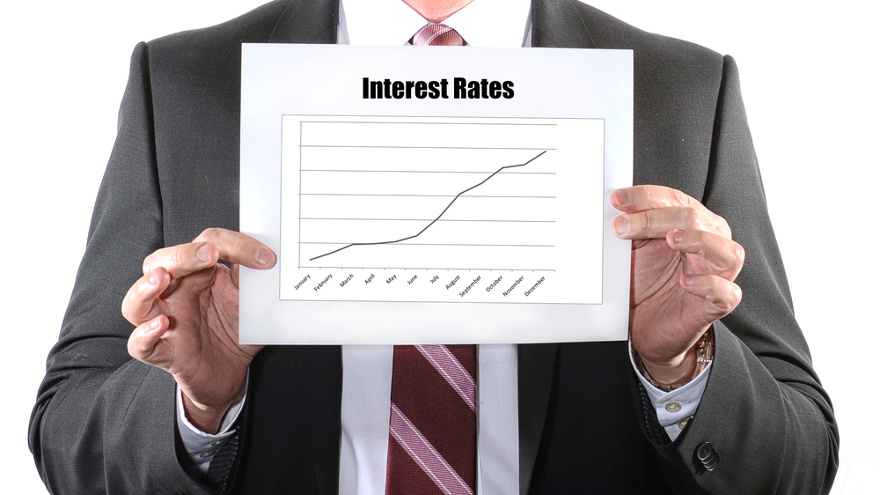With the third quarter having closed on Thursday, Edmunds noticed four intriguing auto-finance trends, as each metric established new records in its database.
Analysts explained that these trends surfaced because consumers are paying more than ever to finance used vehicle purchases as tighter inventory and fewer discounts in the new-vehicle market push shoppers to seek alternatives in the used market.
Read more
Philadelphia, Pittsburgh and Reading have more in common than just being three cities in Pennsylvania. A report generated by doxo, an innovative web and mobile bill pay service, showed the trio from the Keystone State is among locations where consumers are paying the least each month on their retail installment contracts.
Collectively, finance-company and insurance-provider customers in Philadelphia, Pittsburgh, Reading and throughout the United States are spending $698 billion annually on auto loans and insurance combined, according to recently released doxoINSIGHTS reports.
The firm arrived at that total figure and other metrics after conducting a statistical analysis of actual household payments to size the market and amount spent per household across more than 30,000 ZIP codes, which experts determined to cover 97% of the U.S.
The report indicated these are the top five metro areas where consumers are spending the most and least in this budget category:
Most
1. Portland, Ore.: $468
2. Houston: $466
3. Denver: $464
4. Los Angeles: $451
5. Atlanta: $449
Least
1. Pittsburgh: $331
2. Washington, D.C.: $353
3. Cleveland: $357
4. Columbus: $370
5. Philadelphia: $372
The report went on to highlight the spending levels in cities with a population of at least 40,000 households but considerably smaller than the major metro areas. The most and least monthly payments in that population segment included:
Most
1. Harrisonburg, Va.: $736
2. Greeley, Colo.: $635
3. Paducah, Ky.: $616
4. Eureka, Calif.: $615
5. Lawrence, Kan.: $614
Least
1. Cumberland, Md.: $226
2. Albany, Ore.: $226
3. Reading, Pa.: $260
4. Jackson, Tenn.: $260
5. Lynchburg, Va.: $266
The entire report can be seen via this website.
Celebrating its 50th year in the consumer lending market, Carleton looked to enhance its suite of solutions this week.
Following extensive market feedback and discussions with key partners, Carleton released CarCalcs, a comprehensive and integrated sales tax, registration and dealer fee application programming interface (API) to complement its CarletonCalcs solution.
The company reiterated CarCalcs was designed to be an easy and flexible integration for any platform provider in order to connect and populate dealer administration settings. The application’s ease of use is designed to allow for the seamless onboarding of a dealer and real-time access to registration and dealer fee values. The data returned from the API is delivered in a format easily consumed by the CarletonCalcs payment computation module for the precise calculation of retail sales or leases.
These computations can provide the following:
• Sales tax rates by state, city and county
• Sales tax basis including settings for fees and down payments
• Registration fee based on vehicle information
• Dealer fee default amounts by state, including documentation fees
• Finance company and DMS default computation settings
• Ability to compute payment and deal information in a single call
The CarCalcs sales tax and dealer fee API integrates with the title and registration product from Automotive Titling Corp. (ATC) to generate a comprehensive single data channel delivery service. ATC provides automotive sales tax and registration fees in all 50 states.
“For over two decades, ATC has processed thousands of transactions through DMVs all over the country. This has facilitated our ability to build, catalog and uniquely authenticate the most accurate sales tax and registration fee database in the industry,” ATC president Ken Alley said. “Our authentication process is a full-time focus of our expert team”.
The moves were made in light of the vehicle-buying process shifting to a consumer-driven digital marketplace. As a result, Carleton stressed that dealers and finance companies now need their digital retailing platform to support lending regulations nationwide.
Company leadership insisted the combination of Carleton’s loan and lease payment calculation engine, Carleton’s compliant state-driven dealer fee data base, and ATC’s sales tax and title registration data, has resulted in a comprehensive and accurate payment solution.
“We saw a critical need for additional components to calculate accurate payment computations. This was the impetus for developing CarCalcs. Through our partnership with ATC, we have expanded our calculation offerings to include sales tax and registration fees,” Carleton Matt Ruszkowski president and chief operating officer said.
“We knew we needed a partner with the same level of expertise as our proven calculation services. Partnering with ATC was a logical decision,” Ruszkowski added.
Ever since some consumer-advocate commentators latched onto one piece of recent auto-finance data, experts from the automotive world replied with context to counter thoughts that thousands soon would be walking because they no longer had a vehicle.
While vehicle affordability and delinquent volume continue to make headlines, new findings from Experian’s Q4 2018 State of the Automotive Finance Market report released on Thursday show these trends may not be as dire as they seem.
In fact, Experian found the percentage of 30-day delinquent contracts improved year-over-year, while the percentage of 60-day delinquencies saw only a minimal uptick over the same time period.
The report shows 30-day delinquencies dropped to 2.32 percent from 2.36 percent a year ago, while 60-day delinquencies increased to 0.78 percent from 0.76 percent the previous year. The percentage of delinquent loans continues to remain stable even as more and more consumers rely on automotive financing.
In Q4 2018, the report indicated 85.1 percent of all new-vehicle purchases were financed compared to 81.4 percent in Q4 2010.
“While delinquencies can be an indicator of automotive finance market health, it’s important to examine these trends within the larger industry context,” said Melinda Zabritski, Experian’s senior director of automotive financial solutions. “With more car shoppers using automotive financing options, it’s natural to see an uptick in the volume of delinquent loans.
“Lenders need to factor in additional historical trends, such as the percentage of subprime loan originations and shifting payment options, to gain a more complete picture and make the right lending decisions,” Zabritski continued.
Experian acknowledged that much of the conversation surrounding delinquency rates is driven by questions of vehicle affordability, specifically the average financed amounts and monthly payments.
Experian reported the average amount financed for a new vehicle was $31,722 (up $623 from the previous year), while the average amount financed for a used vehicle surpassed $20,000 (up $488 from the previous year).
The report also mentioned the average monthly payment for a new vehicle was $545 (up $30 from the previous year) and the average for a used vehicle was $387 (up $16 from the previous year).
Another component of the conversation around vehicle affordability is interest rates — which for new-vehicle financing was 6.13 percent, up from 5.11 percent a year ago. For used-vehicle financing, the average interest rate was 9.59 percent, according to Experian’s information.
“As loan amounts, monthly payments and interest rates continue to rise, there are a number of factors for consumers to consider as they research their car-buying options,” Zabritski said.
“While consumers appear to be doing their due diligence when making borrowing choices that fit their budget, lenders also play a large role,” she continued. “Every consumer deserves access to quality credit, and lenders should leverage all available data to offer the most comprehensive financing options to car shoppers.”
Additional findings for Q4 2018 from Experian included:
• Total outstanding automotive balances in Q4 2018 was $1.178 billion.
• The percentage of outstanding balances held by subprime and deep subprime consumers remained below 20 percent (19.69 percent).
• Loan originations to super prime consumers grew 3.3 percent to 20.54 percent of total originations.
• Leasing grew year-over-year. The percentage of new vehicles that were leased reach 28.76 percent compared to 28.28 percent a year ago.
• Eight of the top 10 new leased models in Q4 2018 were crossover utility vehicles and trucks.
• The gap between the average new and used monthly payments continued to widen, reaching $158.
Experian is hosting a webinar to discuss the entire State of the Automotive Finance Market report. Registration for the event can be completed here.
And ahead of Thursday’s report release, Zabritiski shared her thoughts on the finance space for an episode of the Auto Remarketing Podcast recorded during the Vehicle Finance Conference hosted by the American Financial Services Association in San Francisco this past January.
The episode is available below.
Finance companies sometimes give grace to contract holders in hopes the individual can get back on the payment track since it’s potentially much more lucrative than having to go through the repossession and recovery processes.
Kroll Bond Rating Agency (KBRA) released a research report last Friday, examining the use of subprime auto finance extensions as a loss mitigation tool for ABS servicers. After taking a closer look at the performance of a specific provider, KBRA believes, in general, that the use of extensions ultimately benefits ABS investors by reducing delinquency and default rates.
However, analysts acknowledged a high rate of extensions within a securitized collateral pool can meaningfully increase bond duration and expose ABS investors — particularly owners of deeply subordinated tranches — to tail risks.
“As such, it is important for investors to understand each servicer’s policy regarding extensions, as well as how extensions are handled within ABS deal structures,” KBRA said.
Kroll Bond Rating Agency senior director of structured finance research Brian Ford shared the report with SubPrime Auto Finance News. Ford explained the project stemmed from the strategy used by Honor Finance in connection with its securitization launched in 2016.
Ford recapped that by early last year, Honor Finance granted extensions to as much as 22 percent of the contracts in the securitization, “well in excess of industry standards … which can mask poor collateral performance — i.e., by keeping delinquencies and default rates artificially low.”
Ford added in the report that “it is important for investors to understand each servicer’s policy regarding extensions, as well as how extensions are handled within ABS deal structures.”
The report touched on strategy employed by many finance companies regarding extensions. Some basic parameters often include:
— Customer must have paid a minimum of six to 12 contractual payments.
— Customer may not have had an extension during the preceding 12-month period.
— One extension occurrence of one or two months may be approved during any 12-month period, with a maximum of seven occurrences for contracts greater than 72 months.
—If the account is delinquent, the extension must bring the account completely current and resolve the delinquency at the time the extension is considered.
Ford pointed out that subprime issuers report monthly extension rates ranging between 2 percent and 6 percent. He added that most of the auto finance companies that KBRA rates actively monitor the success of their extension policy.
“Only a hand full of subprime auto loan securitizations contain specific structural triggers limiting the amount of extensions within the securitized pool,” Ford wrote in the report, referencing operations such as DriveTime and Tidewater.
“However, the legal final maturity of longest dated note class is typically set to equal the tenor of the longest receivable within the securitized pool, plus the maximum number of months that loan can be extended, per the issuer’s policy,” he continued. “Securitization documents typically include provisions that require the servicer to repurchase receivables that are extended past the maturity date of the bonds.
“Investors should understand each servicer’s extension policy and review transaction documents to determine what protections exist to reduce extension risk,” Ford reiterated.
The newest financing data from Edmunds and Kelley Blue Book reinforced how the newly installed chairman of the National Automobile Dealers Association didn’t mince words as the auto industry gathered for annual festivities in San Francisco.
“Affordability is an issue. All of the new technology, safety features and fuel economy add costs. That’s a real concern,” current NADA chair Charlie Gilchrist told fellow dealers and finance company executives who assembled for the closing day of the Vehicle Finance Conference hosted by the American Financial Services Association.
On Friday, Edmunds arrived with information to illustrate just how much of a potential issue affordability is becoming for possible buyers walking into your showroom, scanning online inventory or completing financing applications.
Edmunds reported that tightening credit conditions and rising vehicle prices continued to squeeze consumers in January. Due in part to an evaporation of zero percent financing deals, the average annual percentage rate (APR) on new financed vehicles hit the second highest point in 10 years in January, averaging 6.19 percent.
The newest reading is up from 4.99 percent last January and 4.22 percent five years ago.
Additionally, the average transaction price of a new vehicle is expected to hit a near-record high of $37,150 in January, and zero percent financing offers dropped to their lowest level since 2006.
The analysts at Kelley Blue Book reported similar figures. They indicated the estimated average transaction price for a light vehicle in the United States was $37,149 in January, up 4.2 percent or $1,481 from January of last year.
“Car shoppers who are returning to the market for the first time in a few years could be in for a big shock,” said Jessica Caldwell, Edmunds’ executive director of industry analysis. “Vehicle prices and interest rates are so high right now that consumers are facing the very real possibility of spending thousands of dollars more on a new vehicle than they did last time they purchased a new car.”
And depending on which new model they choose, that sticker and financing shock could be intense.
“There are several factors contributing to strong average transaction prices, which climbed 4 percent year-over-year,” said Tim Fleming, analyst for Kelley Blue Book.
“First, Tesla has approached BMW and Mercedes-Benz U.S. sales numbers in recent months with even stronger transaction prices,” Fleming said. “Also, full-size trucks are more popular than they have been for over a decade, and the new Chevrolet Silverado, GMC Sierra and Ram 1500 pickups helped drive prices up.”
Although Edmunds experts noted that sales in January showed relative strength and the overall impact of the polar vortex across the Midwest was minimal, analysts caution that sales are likely to take a turn through the rest of 2019.
“Although January saw a slight lift, higher fleet sales give the false appearance of a more robust sales month,” Caldwell said. “If the economy starts to slip for any reason, we could see significant repercussions for the overall market.”
Encouraging employment news
At least for now, it appears consumers will need vehicles to get to their employment while gaining income to handle those financing commitments. The trend stems from the U.S. Labor Department’s January Jobs Report also released on Friday.
U.S. Secretary of Labor Alexander Acosta said January’s Job Report demonstrated “the strength of the American economy” as the January Employment Situation report indicated 304,000 jobs were added. Acosta said private sector job creation continued to surge despite the partial government shutdown.
Acosta also noted significant growth in the mining, construction, and transportation and warehousing sectors led the report.
Officials pointed out the unemployment rate ticked up by 0.1 percentage point to 4.0 percent, largely as a result of the temporary lapse in federal government funding. However, January represented the 11th consecutive month that the unemployment rate has been at or below 4.0 percent.
The federal agency went on to mention average hourly earnings rose by 3.2 percent, marking the sixth straight month in which year-over-year hourly earnings have been growing at or above 3 percent. Average weekly earnings rose at an even more robust 3.5 percent year-over-year.
“Another key indicator in the report pointed to the increase of the labor force participation rate to 63.2 percent, the highest rate since August 2013,” Acosta said.
“As the jobs and employment data normalizes over the coming months, we are confident the nation’s economy will continue to build on the strength seen in 2018 and the first report of 2019,” he added.
The latest employment data also impressed Curt Long, who is chief economist at the National Association of Federally-Insured Credit Unions (NAFCU).
“The January jobs report showed no signs that hiring is slowing down,” Long said. “The slight uptick in the unemployment rate owes to the highest rate of labor force participation in over five years.
“Wages growth slowed, which suggests there is still room to run. It also supports the Fed’s patient stance on rates, as inflationary pressures remain muted,” Long added.
Resilient auto industry
Brad Korner, general manager for Cox Automotive Rates and Incentives, described how OEMs didn't lean on a crutch of the past to keep metal rolling over the curb.
"Automakers in January continued a relatively tempered, measured approach to incentives. Our team was tracking fewer programs in the month, notably fewer at Ford, which uncharacteristically held steady and offered fewer-than-normal regional programs," Korner said.
"In January, lease pull-aheads remained popular and there was continued healthy spending on full-size pickups trucks, notably from Ford and GM, who both have money and programs in place on 2019 models to compete with the new RAM model which is offering less incentives due to a high consumer demand," he continued.
"The incentive business is experiencing a transition away from incentive promotion and toward a focus on monthly payments for both finance and lease deals. This is likely to combat the affordability issues and help consumer with budgeting for a new vehicle," Korner went on to say.
"Also, as more digital retailing solutions are offered, consumers are finding more transparency in the deal, with less emphasis on the amount of a rebate or incentive and more emphasis on the resulting monthly payment," he added.
No matter what headwinds might appear in terms of elements like affordability — especially if the Federal Reserve continues to adjust interest rates — Gilchrist is confident dealerships will still be turning used and new metal throughout the year. Along with being NADA chair, he is also president of Gilchrist Automotive, which includes Buick-Chevrolet-GMC, Chrysler-Dodge-Jeep-Ram, Ford, Nissan and Volkswagen franchises at five Texas dealership locations in the Dallas-Fort Worth area.
“We respond well to our local markets,” Gilchrist told the auto finance community during AFSA’s event. “This is a fun business, but it’s an intense business. We have to smile every day and keep our attitude right.”
New-Car Finance Data
|
|
January 2019
|
January 2018
|
January 2014
|
|
Term
|
69.1
|
69.2
|
65.9
|
|
Monthly Payment
|
$551
|
$524
|
$476
|
|
Amount Financed
|
$31,707
|
$31,236
|
$27,573
|
|
APR
|
6.19
|
4.99
|
4.22
|
|
Down Payment
|
$4,191
|
$3,914
|
$3,628
|
Used-Car Finance Data
|
|
January 2019
|
January 2018
|
January 2014
|
|
Term
|
67.2
|
66.9
|
64.4
|
|
Monthly Payment
|
$407
|
$384
|
$363
|
|
Amount Financed
|
$21,763
|
$21,084
|
$19,441
|
|
APR
|
8.88
|
7.83
|
7.58
|
|
Down Payment
|
$2,614
|
$2,473
|
$2,200
|
Source: Edmunds
With the federal government shutdown clash involving President Trump and Congressional leaders already lasting longer than any impasse in history, policymakers, banking leaders and finance companies are all collaborating to help impacted federal workers who are not being paid their wages.
Following a statement by five federal and state financial regulators, Consumer Bankers Association president and chief executive Richard Hunt shared strategy similar to what’s been offered by an array of finance companies who have contract holders with interrupted incomes. It is estimated that more than 800,000 workers are not getting paid during the shutdown.
First, here is what policymakers said in a joint statement that included Consumer Financial Protection Bureau, the Federal Deposit Insurance Corp., the Office of the Comptroller of the Currency, the Federal Reserve Board and the Conference of State Bank Supervisors.
“While the effects of the federal government shutdown on individuals should be temporary, affected borrowers may face a temporary hardship in making payments on debts such as mortgages, student loans, car loans, business loans or credit cards,” the policymakers said. “As they have in prior shutdowns, the agencies encourage financial institutions to consider prudent efforts to modify terms on existing loans or extend new credit to help affected borrowers.
“Prudent workout arrangements that are consistent with safe-and-sound lending practices are generally in the long-term best interest of the financial institution, the borrower and the economy. Such efforts should not be subject to examiner criticism,” they continued.
“Consumers affected by the government shutdown are encouraged to contact their lenders immediately should they encounter financial strain,” they went on to say.
Hunt replied to regulators outlining the assistance programs banks are proactively offering customers impacted by the shutdown. Hunt’s letter that’s available here also thanked regulators for offering guidance similar to that issued during previous shutdowns.
“Consumer Bankers Association member institutions work with customers facing hardships — whether manmade or natural — every day. Banks are working with customers on a one-on-one basis as the partial government shutdown continues and federal employees, through no fault of their own, begin missing paychecks and small businesses are not able to access Small Business Administration loans,” Hunt wrote.
“We know federal employees had no role in this shutdown, neither did banks. As with so many other issues ranging from wildfires, floods and hurricanes to data breaches at retail giants, banks are the ones on the front lines helping make it right for their customers,” he went on to state.
Hunt also appreciated the regulatory guidance, noting it “will enable banks to do more for their customers impacted by this partial shutdown.”
Since the partial shutdown began on Dec. 22, banks have offered furloughed federal workers a variety of assistance, including:
— Deferments
— Temporary hardship programs
— Automatically waiving or refunding overdraft and monthly service fees
— Increasing overdraft limits
— Offering access to certificates of deposit without penalty
— Providing loan payment assistance
— Suspending collection calls
— Streamlining unsecured loans
Along with banks, finance companies are also helping impacted federal workers who have vehicle installment contracts.
For example, Hyundai has relaunched its Assurance program like the automaker did in 2013. Under the plan, the OEM will extend all Hyundai Capital auto loan and lease payments for 30 days for current Hyundai owners who are federal government employees furloughed during the shutdown.
“We recognize that there are many federal employees who are Hyundai owners and are not receiving their normal pay check," said Brian Smith, chief operating officer of Hyundai Motor America. “Hyundai is a brand that aims to make things better for its customers, and this is our way of showing customers ‘We have your back’ during this uncertain time.”
Meanwhile, other captives such as GM Financial and Ford Motor Credit each have alerts at the top of their websites, directing furloughed federal workers who have been impacted to contact them as soon as possible to make payment arrangements.
When the shutdown will end probabaly can’t be predicted based on what been shared via Twitter.
Speaker of the House Nancy Pelosi posted late on Monday, “It’s day 24 of the #TrumpShutdown. 800,000 Americans are losing paychecks. The health & safety of countless more are in jeopardy.”
And Trump retorted on the social media platform on Tuesday morning, “Why is Nancy Pelosi getting paid when people who are working are not?”
BillingTree named a new chief executive officer on Thursday.
Coming aboard as the new leader of the supplier of financial technology and payment solutions is Christine Lee. The company indicated in a news release that former CEO Edgars Sturans will remain as a BillingTree board member.
BillingTree highlighted Lee’s hiring comes at an opportune time for the rapidly growing payment solution provider, supplying a wealth of payment industry and banking experience as the company expands deeper within new verticals. Her expertise will complement the company’s success in ARM, auto finance, banking, credit unions and healthcare.
The company described Lee as a highly accomplished industry veteran having successfully lead teams at Moneris, Vantiv, NPC and Bank of America and is currently the president elect for the Electronic Transactions Association (ETA). She’s also served as the Women’s Network in Electronic Transactions (WNET) president and 11-year board member participant.
BillingTree, headquartered in Phoenix with offices in Toledo, Ohio, processes more than $4 billion in payments annually for clients from multiple industries. The company was most recently recognized as one of the Top Revenue Cycle Management Solutions for 2018.
“I am pleased Christine accepted the CEO position here at BillingTree. Her outstanding resume and experience are the perfect fit to build on our 15-year sustained track record of success, innovation and client service excellence,” Sturans said.
Lee added, “I’m thrilled to join BillingTree, a proven payments company with innovative technology solutions including Payrazr and CareView, which position us for rapid growth within our current and future target verticals.
“The payments industry is rapidly changing, and my career history will serve us well as we continue to scale BillingTree’s revenue growth and software solutions to clients,” Lee went on to say.
Lee plans to be part of BillingTree webinar set for Jan. 30 at 1 p.m. ET, where the company plans to discuss a variety of topics, including a compliance update as well as developments regarding the alert notification process.
To sign up for the free webinar, go to this website.
As the Federal Reserve mulls interest-rate decisions for 2019, Edmunds explained that December’s auto finance data reinforced how 2018 represented a “tipping point.”
Analysts indicated interest rates for new vehicles dipped slightly for a second consecutive month in December. But for used vehicles, the exact opposite happened as the rate jumped a full percentage point year-over-year.
The annual percentage rate (APR) on new vehicles financed during the closing month of the year averaged 5.9 percent in December, compared to 6.0 percent in November and 6.2 percent in October.
For used-vehicle financing, Edmunds indicated the average APR climbed from 7.66 percent to 8.66 percent as the average amount financed topped $22,000.
Edmunds noted that low interest rate finance deals on the new-car side can be attributed to this overall month-over-month dip. According to Edmunds data, 14 percent of buyers received rates below a 2-percent APR, compared to 12 percent of buyers receiving the same rates in November.
“Holiday sales gifted car shoppers with another slight respite from record high interest rates in December, but in many ways this month was a curtain call for robust finance deals,” said Jeremy Acevedo, Edmunds’ manager of industry analysis.
“With the holidays behind us and the most recent Fed rate hike kicking into effect, automakers won’t be as inclined to move mountains in the new year, so shoppers can expect average APRs above 6 percent to be the new normal,” Acevedo continued.
Edmunds noted that reliable incentives such as zero percent finance deals have all but dried up, threatening to derail industry sales in 2019. According to Edmunds data, zero percent finance loans remained flat month-over-month, but at 5.5 percent hit their lowest December level since 2005.
Also of note from the new-car perspective, ALG estimated average transaction prices (ATP) for a new light vehicle was $35,145 in December, up 1.3 percent from a year ago. ALG added average incentive spending per unit declined by $223 to $3,746. The ratio of incentive spending to ATP is expected to be 10.7 percent, down from 11.4 percent from a year ago.
While the rate movements on the new-model side might be more active, Edmunds also pointed out that the average APR for used-vehicle financing climbed only 16 basis points between December 2013 and December 2017.
No matter what happens within the dealership finance offices and finance company underwriting departments, how the Federal Reserve operates in 2019 will be an overarching influencer. Policymakers have moved interest rates higher more than a half dozen times during the past 24 months.
But at least one member of the Federal Open Market Committee thinks it might be time for the Fed to get to he defined as a “neutral rate.” Robert Kaplan is president of the Federal Reserve Bank of Dallas.
Kaplan explained back in October that the neutral rate is the theoretical federal funds rate at which the stance of Federal Reserve monetary policy is neither accommodative nor restrictive.
At the time of his analysis with the U.S. unemployment rate at approximately 3.7 percent and the headline personal consumption expenditures (PCE) rate of inflation at slightly more than 2 percent, Kaplan stressed that, “I believe that the Federal Reserve is achieving its dual-mandate objectives.”
He continued, “As we reach our dual-mandate objectives, I believe that the Federal Reserve should be gradually easing off the accelerator — we no longer need to be stimulating the U.S. economy. As such, I believe we should be gradually and patiently moving toward a neutral policy stance.”
The Fed meets again beginning on Jan. 29, giving the auto finance industry the first glimpse of the year to see if policymakers will follow Kaplan’s suggested course.
“Rising interest rates will be one of the biggest factors influencing how the auto market fares in 2019,” Acevedo said. “Access to cheap credit has been a staple of the post-recession auto market, and 2018 marked a tipping point for the industry.
“Interest rates in 2018 closed more than a point higher than they closed 2017, and rates are only going to continue to trend upward, which poses a real threat to shopper demand as we head into 2019,” he went on to say.
New-Car Finance Data
|
|
December 2018
|
December 2017
|
December 2013
|
|
Term
|
68.41
|
68.99
|
65.18
|
|
Monthly Payment
|
$558
|
$536
|
$487
|
|
Amount Financed
|
$32,056
|
$32,080
|
$28,032
|
|
APR
|
5.87
|
4.73
|
4.05
|
|
Down Payment
|
$4,487
|
$4,056
|
$3,941
|
Used-Car Finance Data
|
|
December 2018
|
December 2017
|
December 2013
|
|
Term
|
67.22
|
66.89
|
64.54
|
|
Monthly Payment
|
$413
|
$392
|
$371
|
|
Amount Financed
|
$22,207
|
$21,613
|
$19,956
|
|
APR
|
8.66
|
7.66
|
7.50
|
|
Down Payment
|
$2,683
|
$2,488
|
$2,281
|
Source: Edmunds
The amount of outstanding deep subprime paper slid to an all time low during the second quarter, according to Experian’s State of the Automotive Finance Market report released on Thursday.
Analysts discovered deep subprime softened to an all-time low of 3.54 percent of the $1.149 trillion that Experian tabulated to be the total amount of outstanding auto-finance balances as of the close of Q2. A year ago, 3.98 percent of all outstanding balances fell into the deep subprime category.
To reiterate, Experian classifies deep subprime paper to be attached to consumers with credit scores between 300 and 500.
Overall, Experian determined that outstanding subprime and deep subprime auto financing — individuals with credit scores below 600 — declined to less than 19 percent of the market. As a result, the report showed average credit scores for new- and used-vehicle financing continue to improve, reaching 715 and 655, respectively.
“Having access to quality credit is something every consumer deserves, regardless of the type of financing used. As the cost of vehicles rises, lenders need to make sure they’re leveraging all available data so they can offer comprehensive financing options to all consumers,” said Melinda Zabritski, Experian’s senior director of automotive financial solutions.
“Consumers can also take steps to make sure they’re financially ready when looking to buy a car. We’re seeing the positive trend of on-time payments, which is just one step toward improving credit scores.”
Meanwhile, as contract amounts and monthly payments continue to reach new highs, Experian thinks that consumers seem unfazed since the percentage of 30- and 60-day delinquencies improved during Q2.
Report findings showed 30-day delinquencies dropped to 2.11 percent from 2.2 percent a year ago, while 60-day delinquencies dropped to 0.64 percent from 0.67 percent over the same time period.
“As we monitor the health of the automotive market, delinquencies are one of the most telling metrics. If this downward trend continues, it can be an encouraging sign,” Zabritski said.
“Moving forward, lenders will want to keep a close eye on car buyers’ payment performance. Understanding these trends and leveraging the power of data helps lenders make the right decisions when analyzing risk,” she continued.
But while delinquencies trend downward, affordability remains a point of industry interest, as the average amount financed continues to rise across the spectrum.
The average new-vehicle installment contract amount jumped more than $700 year-over-year to $30,958 in Q2, while used-vehicle installment contract figures increased $520 to reach $19,708.
Moreover, Experian pointed out that new- and used-vehicle monthly payments hit record highs during the quarter, with the average new monthly payment increasing $20 year-over-year to $525, and the average used monthly payment increasing $13 over the same time period, reaching $378.
Taking an even closer look at the data, Experian explained that finance companies can gain insights from the gap between new and used financing payments, which continues to widen, reaching $147 in the second quarter.
“For some consumers, that gap can mean the difference between buying a new or used vehicle,” Experian said.
The report also showed that consumers are increasingly looking to credit unions to secure automotive financing.
Credit unions saw double-digit growth for new-vehicle financing (12.9 percent) and strong growth overall (4.9 percent), closing in on 21.3 percent of the market at the end of Q2.
The only other provider type to experience growth was captive finance companies, which grew 1.2 percent during the same time period.
Experian mentioned five other additional findings from its latest report, including:
— Outstanding loan balances hit a record high but experienced slowing growth, reaching $1.149 trillion in Q2 2018, up from $1.027 trillion in Q2 2016.
— Leases decreased slightly year-over-year, from 30.83 percent in Q2 2017 to 30.41 percent in Q2 2018.
— 72 months remains the most common loan term for both new and used installment contracts.
— Market share for banks dropped to 31.6 percent in Q2 2018 from 32.3 percent in Q2 2017.
— Interest rates increased across all contract types, with the exception of used-vehicle deals in the deep-subprime segment.












